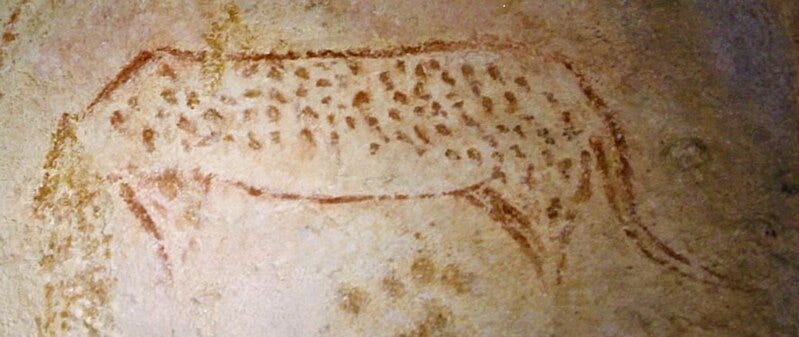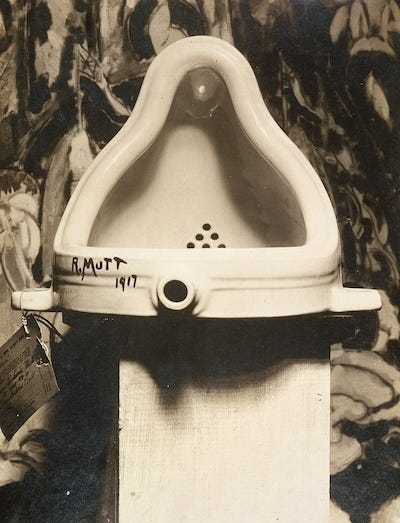The Death of the Artist?
With the dawn of AI artists, we must fight to keep human experience in art or face extinction of the artist
When hip-hop producer Timbaland introduced TaTa, the first AI “artist” signed to his label, it raised standard questions about creativity and the role of machines in art. But TaTa isn’t just a tool or a bot—she’s simultaneously the art and the artist, a recursive synthesis of past and present art/artists trained on archives of human expression. While hip-hop was born from sampling and remixing, sharing and (occasionally) stealing, artificial pop—or “A-pop,” as Timbaland is calling it—pushes this tradition to an extreme where intent, originality and authorship become difficult to identify.
This is just the kind of situation French literary theorist Roland Barthes seemed to anticipate in 1967 when he announced “The Death of the Author.” Barthes argued that the artist should not be viewed as the sole creator of a work’s meaning; rather, some control is relinquished to the reader, listener or viewer to co-create meaning. But how does this relationship apply if the artist isn’t human? Perhaps the art of listening must include considering the artist as an essential part of the art, and since we, as the listeners, are the only human component of the equation, we must declare that AI-generated slop does not count as part of the human conception of art. The founder of the AI tool Suno (TaTa’s digital parent), however, insists that artists of tomorrow “won’t just be human, they’ll be [fully autonomous] IP, code, and robotics.” Either we give in to this redefinition, excluding ourselves from our own creations and allowing art to become a posthuman construct—or we redefine what it means to make art, taking care to make ourselves indispensable.
Defining Art
The more we remove ourselves from the process of art, the closer art comes to extinction. While art has been pronounced dead many times throughout history, each time philosophers have conducted a postmortem analysis, dissecting its constituent parts such as intentionality, perception, medium, form, content, emotion and symbolism. This time we might stitch these parts of art together using tools like TaTa to generate every permutation possible, but I suspect we’ll find that what gives art life is the human assertion that it is art.
John Dewey, a pallbearer for art’s recurring funeral, conceded in his 1934 work “Art as Experience” that machines might do a better job of “mere perfection in execution,” but that human emotion is the “moving and cementing force” in art. Human emotion “selects what is congruous and dyes what is selected with its color,” binding artists and their experience into something that conveys meaning to both the artist and the observer. Dewey breaks down all the components of art, concluding that what makes art is not its components or its structure, but its lived-ness.
As a neuroscientist, I see parallels between the struggle to define art and the struggle to define consciousness. Both resist definition, and attempts to define them create tautologies. In trying to define art, we may unwittingly create it. In studying consciousness, we seem to employ it. One school of thought maps the neural correlates of consciousness: components of the brain (neurons, synaptic activity, etc.) that produce activity that aligns with conscious experience. But the map is not the territory; these correlates don’t explain why or how subjective experience arises.
Similarly, the components of art can’t define why or how something is conceived of as artistic. Only we can do that by making art, the process of which requires an “undergoing” and a “doing,” according to Dewey. A machine can code (“do”) and process (“undergo”), but it can’t experience. We can lay out all the component parts of Frankensteinian monsters like art and consciousness, and combine them endlessly via AI, but the bolt of lightning that makes them live is our human relation to the world around us.
First Art and Becoming Human
Our repeated attempts to define art might never yield an authoritative definition, but in every era, art has been exclusively made by humans, for human purposes. We’ve been making distinctions between “art” and “not art” for centuries, but from Dewey’s perspective, art is a special form of human experience that emerges from our activities, just as “mountain peaks do not float unsupported. ... They are the earth in one of its manifest operations.” And as human activities evolve over generations, so too does art. The flat, everyday plains we scroll through on our phones today may well be the sharp peaks of human experience exhibited in museums of the future. A century ago, film wasn’t accepted as art. Today we question whether lines of code might be art.
Whatever it is, art is an evolving project, an outgrowth from humanity, always progressing through a series of firsts. The goal is never a final artistic destination but a constant progression, which isn’t so much a historical discovery as a philosophical invention to mark human creative activity and perhaps redefine art in each human era. Whether we start with the ruddy pigments on the walls of Chauvet-Pont d’Arc or something even earlier, philosopher Ben-Ami Scharfstein argues in his book “Of Birds, Beasts, and Other Artists” that the evolutionary through line, “the esthetic universal,” evolved from our need for communication, expression and pattern recognition.

Symbols are baked into our very existence, and their expression moves from Egyptian frescoes, Greek sculpture, Roman mosaics and Gothic cathedrals all the way to TaTa’s anticipated mixtape. As Dewey notes, the “live creature” interacts with its environs to produce an expressive object. If we consider AI a new part of our environs, a tool that we’ve constructed, then TaTa is just another representation of first art. But this first is self-generating and autonomous, which threatens every first art hereafter. So we should ask ourselves, what symbolic reasoning do we have for creating AI media?
The Purpose of Art
Greek epics were performed to preserve collective memory and extol the virtues of a proper Greek hero. Egyptian tomb aesthetics secured passage to the afterlife and sustained dynasties. Medieval art glorified God, cementing the divine right of kings and queens until “Liberty Leading the People” toppled the hierarchy. Mapping and preserving art require resources and always serve a human purpose. But the movement to preserve fine art may also have begun the process of separating art from lived human experience, hastening the new AI-induced death of art and human artists.
Philosophers like Dewey and Paul Virilio, for example, didn’t view preservation as a neutral activity; they saw museums as tombs and social monuments. Museums remove art from the world, preserve it in a climate-controlled chamber and, in doing so, strip it of its connection to daily experience. Soon, it will cost you a bitcoin to view an iPhone doomscrolling targeted algorithmic ads behind a glass case. We’ll look for a minute and make our way through the hall of African masks before heading back to our homes to consume whatever everyday media is dumped into the trough.
Museums will likely continue educating schoolchildren and disseminating authority-driven narratives, but in the past few decades, trust in such narratives and institutions is on the decline as many have access to information and even to their own little slice of the art world. Art is increasingly individualized. We buy personalized handicrafts from Etsy and ready-framed prints that coordinate with our decor from TJ Maxx, wear ornate custom-painted manicures and the latest fashion microtrend to suit our style.
Every day, people crave deeply personal art, speaking to the meaning in their own lives. Even the wealthy collect art based on their individual interests; they look for art that will appraise well, hold its value for current tax breaks (if they lend it to a gallery that aligns with their moral, social and political views), appreciate for later resale—but the art must speak to them and their values, of course.
Dewey believed that the separation of fine art from everyday life wasn’t an accident of cultural evolution but a deliberate move to commodify experience. A gesture in sand is free; a framed version of that gesture, replicated in bronze or stored on a blockchain, can be invested in, owned, collected and sold.
If Scharfstein’s “esthetic universal” that pervades all art truly corresponds to human needs, perhaps it will guide us to what we need in the new world of AI-generated art. The institutions of the past played a central role in assigning value (cultural, economic and historical) to a piece of art, reinforcing their own legitimacy. For example, the Académie des Beaux-Arts was one of the first rubber stamps of aesthetic value, codifying taste, canonizing form, housing the gatekeepers to safeguard what constitutes art. But in 1917 Marcel Duchamp exhibited a urinal signed “R. Mutt” and nearly demolished institutional authority, because it meant that intention could be enough to designate something as art, even when it lacked execution and beauty.

Likewise, in the first half of the 20th century, artists disillusioned by two world wars needed to rail against institutional norms in search of meaning. On the heels of Nietzsche, meaning was in short supply, and absurdist art soon rose to the occasion, with movements like Dadaism giving us permission to live and create out of sync. Despite art being pronounced dead on arrival again and again by Duchamp, Warhol or an amateur historian on TikTok, we keep reviving it to serve our needs. But what do we need in the 21st century? New songs made from a process of AI amalgamation, paint-by-number “Starry Night” kits, NFT monkeys, leather handbags? Or do we need to redraw boundaries around art to prevent it from being used to exploit our insatiable hunger for novelty?
‘Now I Am Become Art ...’
Scharfstein’s conclusion about the universal esthetic is that the explanation of art, like the explanation of what is human, is enigmatic and always renewing, a similar concept to poet John Keats’ “negative capability.” Keats said that poets are “capable of being in uncertainties, mysteries, doubts, without any irritable reaching after fact and reason.” Keats said it was the artist, not the art, that possessed this capability, but perhaps the art and the artist have always been the same. Perhaps we’ve been searching for a way to see ourselves evolving, and with AI we’ve finally fashioned a mirror that reveals the recursive, self-replicating nature of art and ourselves. We might begin to see what Dewey, Scharfstein and Keats saw if only we could focus on ensuring that whatever art is, a human is the one making it.
What Barthes didn’t anticipate was that the death of the author might lead not only to the birth of the reader, but also to the zombified corpse of art itself, propped up to perpetually produce a profit. Through TaTa, we may gain a clear picture of our commodification. If we erase the artist and the observer as divine co-creators in exchange for fully autonomous IP, we can maximize profits—and the last human artists can retire on a diet of slop. Either we accept our responsibility as artists, or we write yet another eulogy. If TaTa is a mirror, then perhaps we’ll see the body in the casket is our own. The question is, do we still have a pulse?




